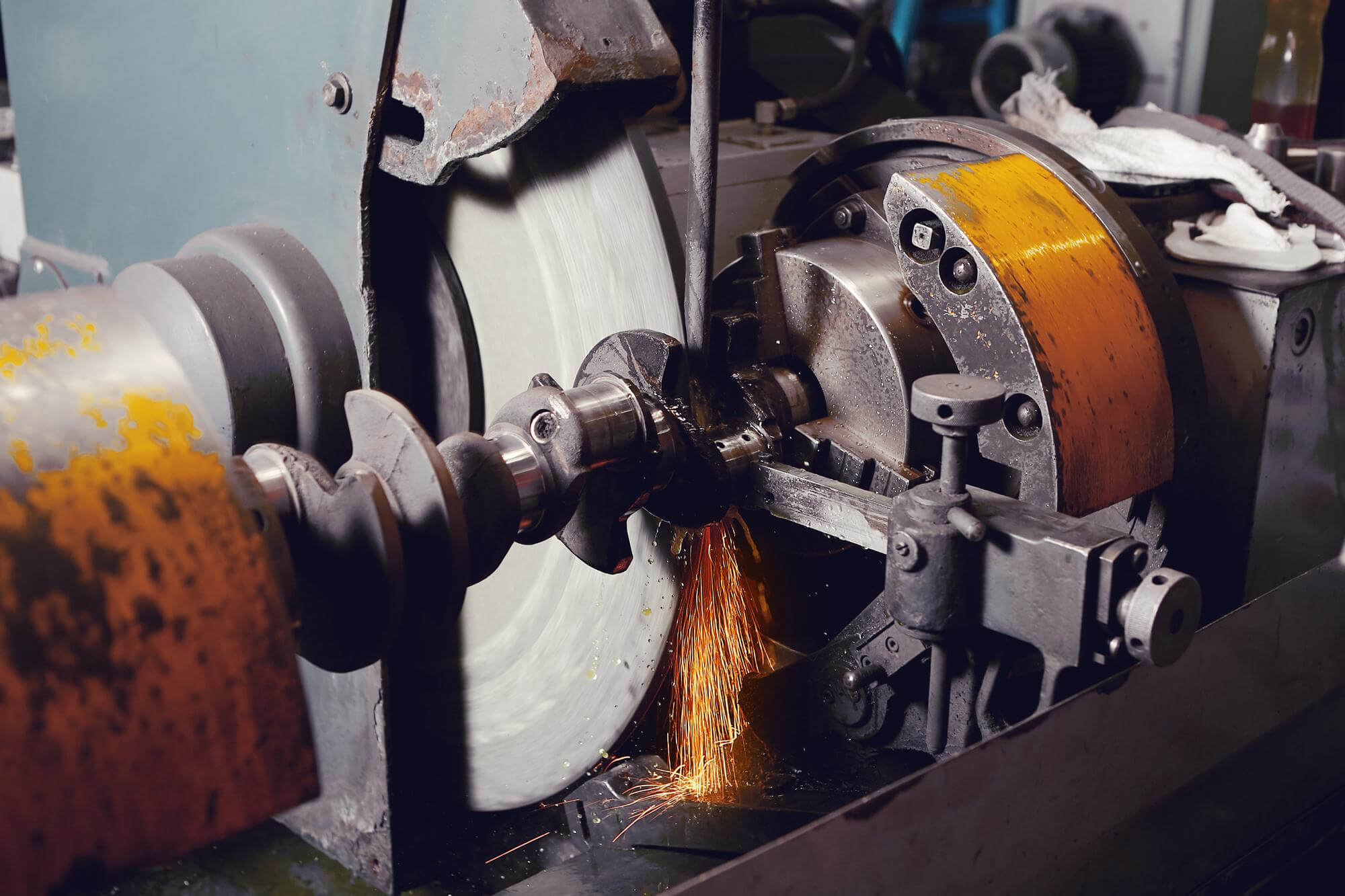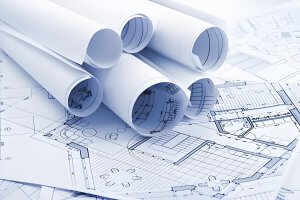Rubber compression molding machines are essential in various industries that require precise and durable rubber components. One of the key processes in manufacturing these machines is ensuring that all parts, especially molds, are of high quality and meet rigorous standards. The two primary methods used to achieve this are grinding techniques and CNC machining. While CNC machining is crucial for creating the overall shape and precision of the parts, grinding plays a vital role in ensuring surface quality and tight tolerances, especially in molds subjected to extreme conditions.
This article provides a comprehensive guide to grinding techniques and their relationship with CNC machining in rubber compression molding machine production. Whether you are a procurement specialist looking for custom parts or a technician working on production, understanding these processes will help you achieve better results.
1. The Importance of Grinding in Rubber Compression Molding Machine Production
In the manufacturing of molds for rubber compression molding machines, precision is key. Rubber molding involves the compression of raw rubber material into pre-formed molds, which are then heated to vulcanize the rubber into a finished product. To ensure that these molds deliver consistent and high-quality results, they must be machined with extreme precision.
Grinding techniques are essential in finishing molds because they provide the necessary surface quality and tight tolerances required in high-pressure, high-temperature operations. Grinding can improve the flatness, roundness, surface finish, and dimensional accuracy of the molds, all of which are crucial for avoiding defects in the final rubber products.
Key Advantages of Grinding in Mold Production:
- Improved Surface Quality: Grinding ensures smooth, defect-free surfaces, reducing friction and wear in the mold.
- High Dimensional Accuracy: Tight tolerances are critical in ensuring that the mold components fit perfectly.
- Increased Durability: Grinding helps improve the wear resistance of the mold, extending its lifespan.
2. CNC Machining and Its Role in Rubber Compression Molding Machines
While this article emphasizes grinding techniques, it is also essential to briefly touch on the role of CNC machining in producing parts for rubber compression molding machines. CNC machining offers unparalleled precision in shaping and cutting parts. It is often the first stage in creating the molds, followed by grinding to refine the surface and meet the final specifications.
The most common materials for molds in rubber compression molding include stainless steel and aluminum, depending on the required durability and production volume. CNC milling is used to rough out the mold shape, while CNC turning may be employed for cylindrical components.
3. Detailed Look at Grinding Techniques
Grinding is more than just a finishing process. It plays a pivotal role in achieving precision in rubber compression molding. Let’s explore the different types of grinding techniques commonly used:
3.1 Surface Grinding
Surface grinding is used to produce a smooth finish on flat surfaces. A rotating abrasive wheel is used to remove material from the mold’s surface. This technique is critical for ensuring the mold’s surface has the correct flatness and finish, which is crucial for rubber compression molding.
3.2 Cylindrical Grinding
In cylindrical grinding, a rotating workpiece is ground with an abrasive wheel. This process is especially useful for molds with cylindrical parts, such as those used in compression molding machines that require precise dimensional accuracy along the entire length of the component.
3.3 Centerless Grinding
This technique is used when high-volume production is required. It allows for the grinding of cylindrical parts without requiring the part to be held between centers. For rubber molding machine components that need to be produced quickly and in large quantities, centerless grinding provides an efficient solution.
3.4 Precision Grinding
Precision grinding ensures that parts have the tightest tolerances. This is critical in mold production, where even a small deviation can lead to mold defects and ultimately impact the quality of the molded rubber parts.
4. Grinding Wheels and Abrasives
The choice of grinding wheel and abrasive material is crucial to the success of the grinding process. Commonly used abrasives include aluminum oxide and silicon carbide, both of which offer different properties depending on the material being ground.
Table 1: Common Abrasives for Grinding in Mold Production
| Abrasive Type | Material Compatibility | Application | Advantages |
|---|---|---|---|
| Aluminum Oxide | Steel, Stainless Steel | General mold grinding | Durable, suitable for tough metals |
| Silicon Carbide | Aluminum, Brass, Non-ferrous | Fine surface finishing | Excellent for soft metals |
| Diamond | Hard materials (e.g., ceramics) | Precision grinding | Extremely hard, long-lasting |
| Cubic Boron Nitride (CBN) | Hardened steel, cast iron | High-speed, precision grinding | Suitable for high temperatures |
Choosing the right grinding wheel is essential for ensuring the efficiency and quality of the mold production process. Abrasive selection should be based on the material properties of the mold, the desired surface finish, and the required dimensional tolerances.
5. Grinding Process Variables and Their Impact
Several process variables affect the outcome of grinding. These include the wheel speed, feed rate, and depth of cut. Each variable influences the surface finish and material removal rate, and must be optimized based on the specific mold requirements.
5.1 Wheel Speed
Higher wheel speeds allow for quicker material removal, but they can also cause excessive heat, which may damage the mold surface. In rubber compression mold production, wheel speeds must be carefully controlled to avoid overheating the mold material.
5.2 Feed Rate
The feed rate determines how fast the grinding wheel moves across the mold surface. A higher feed rate increases productivity but may sacrifice surface quality. A slower feed rate ensures a smoother surface finish but increases the production time.
5.3 Depth of Cut
The depth of cut refers to how deep the grinding wheel removes material from the surface. A deeper cut removes material faster but increases the risk of defects such as chatter marks or thermal damage.
Table 2: Process Variables for Optimizing Grinding
| Variable | Effect on Surface Finish | Effect on Material Removal Rate | Recommended Range for Mold Production |
|---|---|---|---|
| Wheel Speed | Smooth finish at lower speeds | Higher speeds increase removal rate | 1800-3600 RPM |
| Feed Rate | Slow feed improves surface | Fast feed increases removal rate | 0.01-0.05 mm/revolution |
| Depth of Cut | Shallower depth improves quality | Deeper cuts remove material quickly | 0.02-0.05 mm/pass |
6. Grinding Techniques for Different Mold Materials
Different mold materials require different grinding techniques to achieve the desired results. For example, hardened steel molds require precision grinding to ensure that the molds remain durable and produce high-quality rubber parts. On the other hand, aluminum molds, which are softer, benefit from lighter grinding techniques to avoid excessive material removal.
Table 3: Recommended Grinding Techniques for Common Mold Materials
| Mold Material | Grinding Technique | Grinding Wheel Type | Surface Finish Target |
|---|---|---|---|
| Hardened Steel | Precision Grinding | Cubic Boron Nitride (CBN) | Ra < 0.2 μm |
| Stainless Steel | Cylindrical Grinding | Aluminum Oxide | Ra < 0.5 μm |
| Aluminum | Surface Grinding | Silicon Carbide | Ra < 0.8 μm |
| Tool Steel | Centerless Grinding | Diamond | Ra < 0.4 μm |
Each material has specific requirements in terms of grinding techniques, making it critical to select the correct process for achieving the required surface finish and tolerances.
7. Challenges in Grinding for Rubber Compression Molding Machines
One of the primary challenges in grinding for rubber compression molding machines is dealing with thermal expansion. Molds used in these machines are exposed to high temperatures during operation, which can cause the material to expand. During the grinding process, the heat generated can exacerbate this expansion, potentially leading to warping or dimensional inaccuracies in the mold.
7.1 Overcoming Thermal Expansion
To address thermal expansion, several techniques can be employed:
- Coolant application: Using coolant during the grinding process helps keep the mold material at a stable temperature, reducing the risk of thermal expansion.
- Controlled grinding speeds: Slower grinding speeds generate less heat, which minimizes thermal effects on the mold material.
- Post-grinding heat treatment: For materials like hardened steel, a heat treatment after grinding can help stabilize the material and reduce the risk of dimensional changes during mold operation.
8. Final Finishing: Polishing After Grinding
After grinding, polishing is often required to achieve the final surface quality needed for molds. Polishing helps remove the remaining small surface imperfections and prepares the mold for high-quality rubber production.
In mold production for rubber compression molding machines, the polishing process typically involves using fine abrasives or diamond pastes. Polishing not only improves the aesthetic quality of the mold but also ensures that the rubber products produced from the mold have a smooth surface finish, free of any surface defects that could compromise the product’s performance.
Grinding techniques play a critical role in the production of molds for rubber compression molding machines. While CNC machining is essential for shaping the molds, grinding ensures that the molds meet the tight tolerances and surface finish requirements necessary for high-quality rubber production.
For manufacturers and procurement specialists, understanding the importance of grinding in mold production can help ensure that you receive parts that meet the highest standards of quality and durability. By selecting the correct grinding techniques and optimizing the process variables, you can achieve molds that deliver consistent, high-quality results, even in the demanding environment of rubber compression molding.
Other Articles You Might Enjoy
- Precision CNC Machining of Steel: High-Volume Production
Precision CNC Machining and High-Volume Production As an integral part of modern manufacturing processes, Precision Computer Numerical Control (CNC) machining brings about unmatched accuracy and consistency in the production of…
- What is Compression Molding? Details Explained
Introduction to Compression Molding Compression molding is a high-volume, high-pressure manufacturing process that transforms raw materials into usable shapes through the application of heat and pressure. This article aims to…
- Mastering Bead Blasting in CNC Machining(insert molding Edgar)
Bead blasting is a crucial process in the world of computer numerical control (CNC) machining. It’s an efficient procedure for using high-pressure air mixed with tiny glass beads to remove…
- Material Versatility in CNC Machining: From Titanium to Thermoplastics
Introduction to CNC Machining CNC machining stands as a cornerstone in the manufacturing sector, enabling the precise creation of parts and components. This process utilizes computer numerical control (CNC) to…
- The Future of Manufacturing: Exploring the Potential of Insert Molding in CNC Machining
As the manufacturing industry evolves, innovative techniques such as insert molding are reshaping the landscape of CNC machining. This article delves into the potential of insert molding in CNC machining…
- Precision CNC Machining for High-Performance Industrial Machinery
Precision CNC Machining for High-Performance Industrial Machinery The process of Precision CNC (Computer Numerical Control) machining is at the core of manufacturing high-performance industrial machinery. This technique leverages a computer's…






